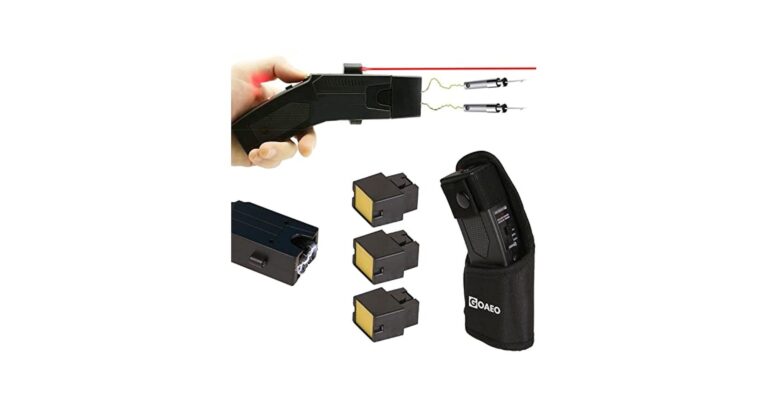Table of Contents
- Common Electrical Faults Leading to Stun Gun Short Circuits
- Environmental Factors Impacting Stun Gun Performance
- Materials and Design Flaws Contributing to Internal Shorts
- Preventative Maintenance Tips to Avoid Short Circuit Issues
- To Wrap It Up
Common Electrical Faults Leading to Stun Gun Short Circuits
Short circuits in stun guns often stem from a handful of typical electrical issues that compromise the internal circuitry. One of the most frequent culprits is moisture intrusion. Whether from sweat, rain, or accidental spills, water can seep into the device housing and create unintended conductive paths between components. This disrupts the carefully designed electrical flow, causing an instant short circuit. Additionally, corroded contacts or battery terminals can degrade the circuit’s integrity, increasing resistance and generating heat that ultimately leads to failure.
Another critical factor is damaged wiring or faulty insulation. Over time, repeated shocks, drops, or pressure on internal wires can cause breaks or chafed insulation. When exposed wires touch one another or conductive metal components, a short becomes inevitable. Common electrical faults also include manufacturing defects like poor solder joints or subpar circuit board design, which may leave tiny gaps or bridges prone to electrical leakage. To prevent such failures, regular maintenance and visual inspections are essential to ensure all parts remain dry, clean, and securely connected.
- Moisture ingress and water damage
- Corroded battery contacts
- Frayed or broken wires
- Weak insulation causing exposed circuits
- Poor soldering and manufacturing defects
Environmental Factors Impacting Stun Gun Performance
Stun guns rely heavily on the stability of their electrical systems, which can be significantly influenced by external environmental conditions. Moisture and humidity are among the primary culprits that compromise performance; when water infiltrates the device or accumulates on its surface, it can create unintended pathways for electricity to flow, leading to short circuits. Similarly, extreme temperatures can cause the internal components to expand or contract, putting stress on delicate circuits and potentially causing connections to weaken or break. This interplay of heat and cold not only reduces the device’s reliability but may also accelerate wear and tear over time.
In addition to weather-based elements, dust and debris also pose substantial risks. Fine particles can settle inside the stun gun’s casing, bridging contacts and generating electrical shorts. Moreover, exposure to corrosive environments-such as salty air near coastal regions or chemical vapors-can degrade the integrity of circuits and conductive materials. To maintain optimal operation, it is critical to keep stun guns clean and dry, storing them in protective cases to shield from these environmental hazards that silently undermine their functionality.
Materials and Design Flaws Contributing to Internal Shorts
When examining the root causes behind internal shorts in stun guns, the choice of materials plays a pivotal role. Many low-cost devices use substandard metals or poorly insulated wiring, which can degrade quickly under repeated electric discharges. For instance, copper wiring with insufficient plating may corrode over time, creating microscopic fissures that enable unintended electrical contact. Additionally, the quality of insulating materials-such as plastic casings and internal rubber seals-can deteriorate due to heat or environmental exposure, allowing conductive particles or moisture to bridge critical components, leading to internal short circuits. Understanding the importance of non-conductive, heat-resistant materials is essential in preventing these failures.
Design flaws further exacerbate the risk of short circuits in these devices. A common issue is the overcrowding of circuit boards without adequate spacing between conductive parts, which increases the likelihood of electrical arcs during high-voltage operation. Moreover, shortcuts during assembly-like insufficient soldering or loose connections-can create unstable contact points within the stun gun, directly contributing to shorts. Effective design should incorporate
- robust insulation barriers
- thermal management systems
- optimized component layout
Preventative Maintenance Tips to Avoid Short Circuit Issues
Maintaining your stun gun in optimal condition is key to minimizing the risk of short circuits, which can compromise device safety and functionality. Regular inspection and cleaning of the electrical contacts, particularly the electrodes, help prevent debris or moisture buildup that could cause unwanted connections. Always store the stun gun in a dry, temperature-controlled environment to avoid corrosion or damage to the internal wiring. Additionally, avoid using abrasive materials during cleaning; instead, use a soft, lint-free cloth and isopropyl alcohol to eliminate grime without damaging sensitive components.
Implementing a routine checklist can significantly enhance device longevity and reliability. Consider incorporating the following preventative measures into your maintenance schedule:
- Regular Battery Checks: Ensure batteries are properly charged and replaced as recommended to prevent voltage fluctuations that might lead to shorts.
- Inspect Wiring and Connectors: Look for frayed wires or loose connections inside the casing to catch issues before they escalate.
- Keep Away from Liquids: Avoid exposure to water or high humidity, which can erode insulation and cause internal shorts.
- Proper Charging Practices: Use only manufacturer-approved chargers and avoid overcharging to protect internal circuits.
To Wrap It Up
In conclusion, understanding why stun guns short circuit is essential for both users and manufacturers looking to maintain device reliability and safety. Common causes such as moisture intrusion, damaged internal components, low-quality materials, or improper handling can compromise the electrical pathways, leading to short circuits. By recognizing these factors and following proper maintenance and usage guidelines, you can extend the lifespan of your stun gun and ensure it functions effectively when needed. Staying informed about the technical aspects behind these devices not only promotes safer use but also helps in making smarter purchasing decisions. Keep these insights in mind to get the most out of your stun gun while minimizing the risk of unexpected failures.Check Our Other Blogs
- StunGun – Your Trusted Source for Stun Guns, Laws, and Self-Defense Tips
- PepperSprayLaws – Your Trusted Resource for Pepper Spray Information
- StunGunLaws – Your Trusted Guide to Stun Gun Legality and Safety





